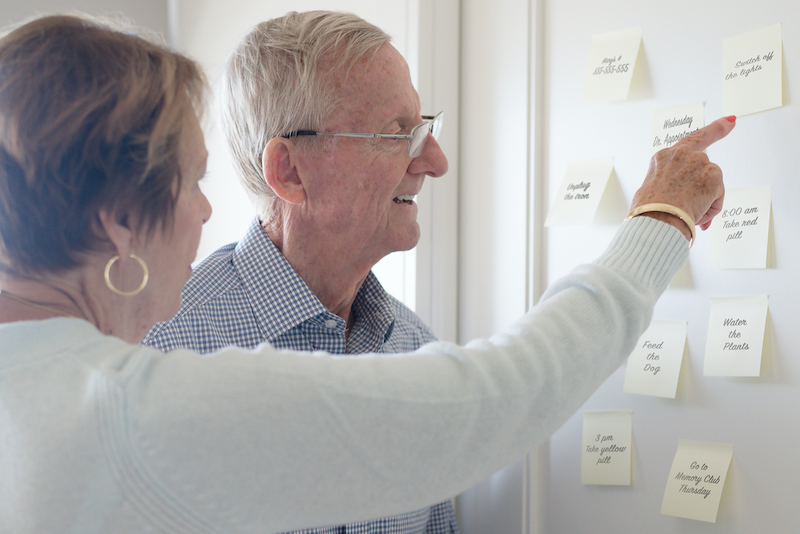
Safety at home for those with dementia begins with easy home modifications.
The day-to-day dilemmas of providing care for someone you care about with dementia are constantly changing. Today, the challenge may be frustration with the lack of ability to communicate effectively. Tomorrow, it might be wandering and seeking to go “home.” There may be sleepless nights if sundowning is an issue, or aggressive actions and words that come from apparently nowhere.
Through it all, safety at home is key, and therefore starts with making sure your environment is conducive to the distinct needs of an individual with dementia. A beneficial first step is to take a quick walk-through evaluation of your house to locate problems, such as tripping hazards (loose throw rugs, cords, clutter, etc.), insufficient lighting, or the unsafe storage of hazardous items (knives, cleaning products, etc.).
Then, implement any or all of these ideas:
- Use labels. Labeling widely-used items, either with words or pictures, often helps jog the senior’s memory and increase independence. Attach labels on the cabinets and refrigerator to specify what’s inside, in the bathroom with easy details for the morning routine, as well as on the senior’s closets and dresser drawers.
- Contrast colors, but minimize busy patterns. Using contrasting colors such as a white plate on a navy placemat helps in easing visual confusion. In addition, remember that bright patterns may cause overstimulation, or increase delusions and hallucinations, as the senior may, for example, envision insects moving across a busy pattern on the bedspread or rug.
- Pay attention to doorways. Keep any doors securely locked that could bring about harm for the senior, such as the door into the basement or garage, as well as the front/back entryway doors. But leave other doors in the home open, so that the senior can more easily navigate through the rest of the house.
- Place photos purposefully throughout the house. Pictures of loved ones and happy memories that you can point out and talk about together can help a senior loved one see the home as a positive environment, and also act as a distraction when needed from challenging behaviors or moods.
- Keep commonly-used items easy to access. The television remote, cups and other utensils, a favorite blanket or pillow – anything the older adult would like to have on hand often – should be left somewhere front and center for the person to spot easily, or, stored in a labeled location to lessen frustration.
- Install a raised toilet seat, non-slip mats, and grab bars. In the event that you don’t already have these safety items in place in the bathroom, now is a great time to reduce the chance of falls.
Grace Home Care’s knowledgeable care professionals are available to complete a walk-through of your home as well and make additional recommendations to improve comfort and safety for someone with Alzheimer’s. Reach out via our online contact form or give us a call at 785-286-2273 to learn more about our compassionate Alzheimer’s care and memory care in Topeka, KS.
